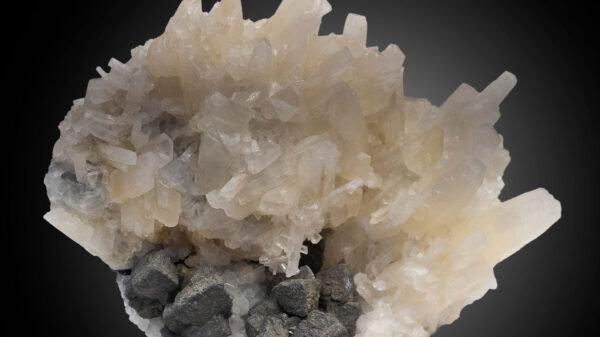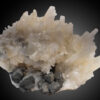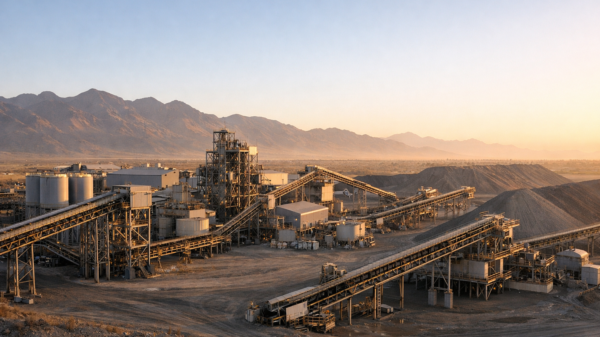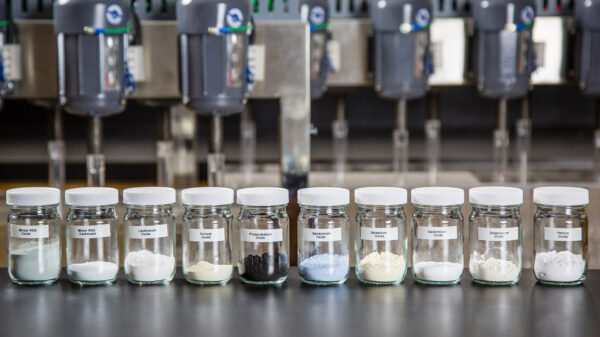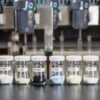According to the United States Ambassador to Canada, David L. Cohen, the successful transition to clean energy relies on robust collaboration between both countries and in securing a North American supply chain of critical minerals.
Cohen visited the Canadian Club of Ottawa on Tuesday and said that access to critical minerals –from extraction to processing to manufacturing– is a critical matter of energy security.
“Canada and the United States need to help each other to make this possible – to drive demand for electric vehicles, to help fund critical mineral mines, and to move manufacturing, refining and mining back to North America, in a responsible way,” Cohen said during his speech.
He added that both countries are “too reliant on too few geopolitically unreliable countries” in the critical minerals business.
“I don’t need to remind you of what happens when the supply chain breaks down. We lived through that during the pandemic and nobody wants to live through that again.”
“I suspect everyone in this room knows we have a problem. Simply put, we don’t have enough of these minerals today to meet the world’s –and our own– growing demand,” Cohen explained. “Our current supply chain for these minerals–from extraction to production to recycling – is simply not diverse enough for the future that’s coming.”
https://twitter.com/cdnclubottawa/status/1719755005211631974
Inflation Reduction Act may pose lithium shortage
Cohen emphasized that the Inflation Reduction Act and other initiatives like the 2021 Bipartisan Infrastructure Law are playing a crucial role in fortifying regional supply chains, which he described as the lifeblood of both countries’ economies.
The Inflation Reduction Act represents the largest investment into addressing climate change in the United States history and according to some analyses, it is projected to reduce greenhouse emissions to 40 per cent below 2005 levels.
The act is set to significantly impact the lithium industry, particularly regarding electric vehicles (EVs) and their battery components. It introduces changes to federal EV subsidies, imposes requirements on the lithium supply chain and is reshaping the industry’s dynamics.
There are concerns about a potential lithium shortage, leading to a global focus on building regionalized supply chains.
Cohen highlighted the positive impact of these funding and investment opportunities on Canadian companies, such as Graphite One Inc. (CVE: GPH). The company secured a $37.5-million grant from the U.S. Department of Defense under the Defense Production Act to support the development of its graphite mine in Alaska.
He pointed out that three Canadian companies are poised to benefit from U.S. President Joe Biden’s October 13 announcement, which allocated $7 billion in Bipartisan Infrastructure Law funding to seven regional clean hydrogen hubs. The U.S. envoy specified that Enbridge Inc. (TSE: ENB) is participating in the Mid-Atlantic Hub, TC Energy (NYSE: TRP) in the Heartland Hub and AltaGas Ltd. (TSE: ALA) in the Pacific Northwest Hub.
Read more: Lithium South Development first production well installed at Hombre Muerto lithium project
Read more: Lithium South Development expands production goals, updates PEA on Hombre Muerto lithium project
Demand for ‘green’ minerals to skyrocket in the next 15 years
According to the International Energy Agency, there is an anticipated four to sixfold increase in the demand for essential minerals for green technologies like copper, lithium and rare metals over the next 15 years.
“Certain minerals will see an even more significant surge. For instance, by 2040, graphite demand is expected to grow by 25 times and the demand for lithium is projected to increase by a staggering 42 times,” Cohen noted.
China wields a substantial influence across the critical minerals industry at all stages of the supply chain, with a particular focus on mining and refining.
According to a Brookings Institution report, China is responsible for refining 68 per cent of the world’s nickel, 40 per cent of copper, 59 per cent of lithium and 73 per cent of cobalt.
“Most significantly, China holds 78 per cent of the world’s cell manufacturing capacity for electric vehicle batteries, which are essential for a transition to electric batteries as we try and wean ourselves off of fossil fuels,” Cohen said.
“Given the current state of play, the status quo will not provide the energy security that Canada, the United States or our democratic friends and allies need for our cleaner energy future.”
Read more: Taliban plans to join China’s Belt and Road Initiative
Read more: China continues to expand global influence in lithium market: S&P Global
EV battery demand increases lithium demand
Lithium-ion batteries are the preferred choice for electric car batteries due to their combination of high energy density, rechargeability, lightweight design, fast charging capabilities and long cycle life.
Last year, lithium saw its prices rise but lithium carbonate and hydroxide have been dropping throughout this year. According to some reports, the price has decreased because the demand for electric vehicles in China has decreased and battery manufacturers have cut back large lithium purchases as a result.
This month, the European Commission launched an investigation into whether it should levy substantial tariffs on electric vehicles manufactured in China. The reason was to protect the competitiveness of vehicles produced in Europe. According to the Commission’s findings, Chinese electric vehicles are –on average– 20 per cent more cost-effective than their European counterparts.
Junior lithium miners play a vital role in the lithium industry, addressing the surging demand driven by the electric vehicle (EV) and renewable energy sectors. They are pioneers in lithium innovation and technology, striving to become more cost-effective producers while actively working to reduce their environmental impact.

Salar del Hombre Muerto in Argentina is one of the most abundant sources of lithium worldwide. Photo by NASA via WIkimedia Commons.
Junior miners pivotal for lithium supply
With the booming lithium market, these junior miners offer lucrative investment opportunities and have become targets for mergers and acquisitions by major mining corporations. Their geographical advantages, particularly in lithium-rich regions like Argentina’s Lithium Triangle, position them for lower production costs and faster market entry.
Among the Canadian companies operating in the Argentinean region, notable players include Allkem (TSX: AKE) and Livent Corporation (NYSE: LTHM). Recently announced a merger to create a new firm valued at US$10.6 billion. Their operations are centered in the Salar del Hombre Muerto in the Catamarca province, which host other major projects run by the Korean firm POSCO (KRX: 005490).
Lithium South Development Corporation (TSX-V: LIS) (OTCQB: LISMF) (Frankfurt OGPQ) has made significant strides in this lithium-rich region. The company recently reported a remarkable 175 per cent increase in the total lithium brine resources at the Hombre Muerto North Lithium Project.
Other main players in the lithium industry include New Age Metals (TSX.V: NAM), Azincourt Energy (TSX.V: AAZ), Sigma Lithium (NASDAQ: SGML), Lithium Americas (TSX: LAC), Patriot Battery Metals (TSX.V: PMET), Standard Lithium (TSX.V: SLI), Piedmont Lithium (NASDAQ: PLL), Critical Elements (TSX.V: CRE) and American Lithium (TSX.V: LI).
In essence, junior lithium miners are pivotal in supplying lithium, driving innovation, attracting investments and shaping the future of this dynamic industry.
Lithium South is a sponsor of Mugglehead News coverage







